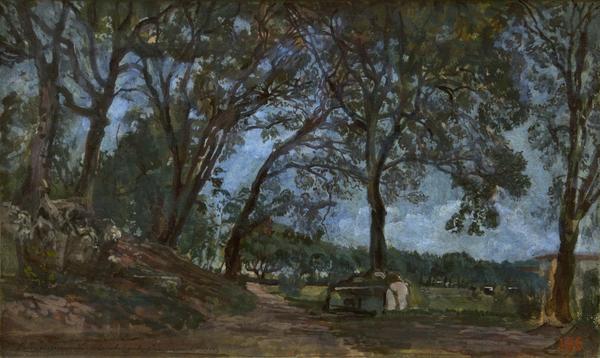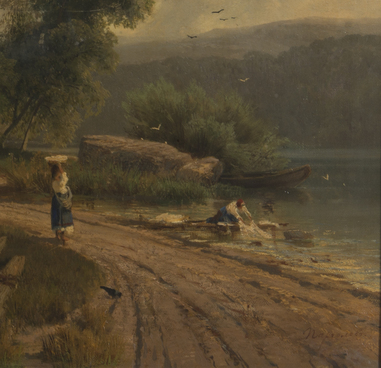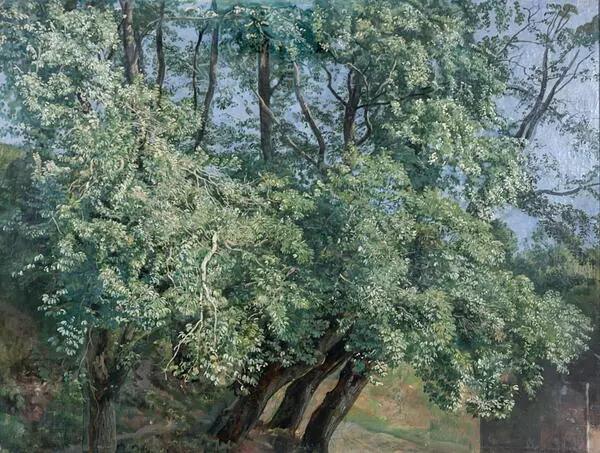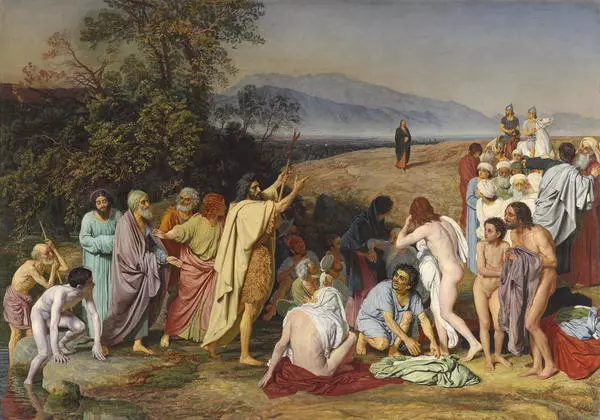Religious pictures are pieces created on selected Christian themes from the Bible – a unique heritage of human culture. They reflect the concepts of beauty and moral ideal, contemplations about the good and the evil. Gospel narratives often provided the basis for the painter’s philosophical thoughts about the spiritual substance of life, as, for instance, the picture by Aleksandr Ivanov The Appearance of Christ before the People. Over twenty years he worked on his picture, twenty four times he changed the composition of the picture, he made over three hundred studies and sketches from nature for even tiny details like water running around stones or the branches of a tree.
His study Landscape at Olevano, painted in the vicinity of Rome, in Roman Campania, is also part of his preparation for his future painting. In this work the painter succeeded in making the presence of full-of-light-and-air space felt by using minimal tools. The grey and blue sky is seen through branches of olive trees. The composition of Ivanov’s studies was starkly different from the manner used in picture compositions of those times. It is not clearly divided into different perspectives, the composition is natural and relaxed, it retains the simplicity of viewer impression and at the same time contains a significant artistic breadth. Its motif, colour and light blend into a single image of the landscape. While for academic painters the prevailing element of the picture was a drawing, Ivanov predominantly uses colour in his studies, which became characteristic of paintings of the late 19th century, when, according to Igor Grabar, ‘such resolute, full toned, fresh, convincing and free of any compromise paints’ came into being.
The study is painted in oils on paper by liquid strokes, with its foundation seen through. This technique resembles working in watercolour. As a landscape painter, Ivanov sought to unravel the secret of open-air painting: he closely watched its beauties, trying to see meticulous details of each olive branch, each stone washed by cool streams. He painted lots of sketches and studies of mountainous and horizontal stretches of horizon trying to portray the airy atmosphere that covers the distance with wispy smoke. He was interested in nature at its different periods of night and day, in different light. He painted his studies in free and bold strokes, which were so unlike the glossy, somewhat dry portrayal of the finished picture. His scholars note that the studies ‘had something mysterious, hypnotizing and engaging the viewer that make them gaze into pictures finding ever new splendours in the most ordinary places and “fragments” of nature, — something that was completely lost in the huge reddish and cold-palette canvas’. (A.P.Novitsky, V.A. Nikolsky).












